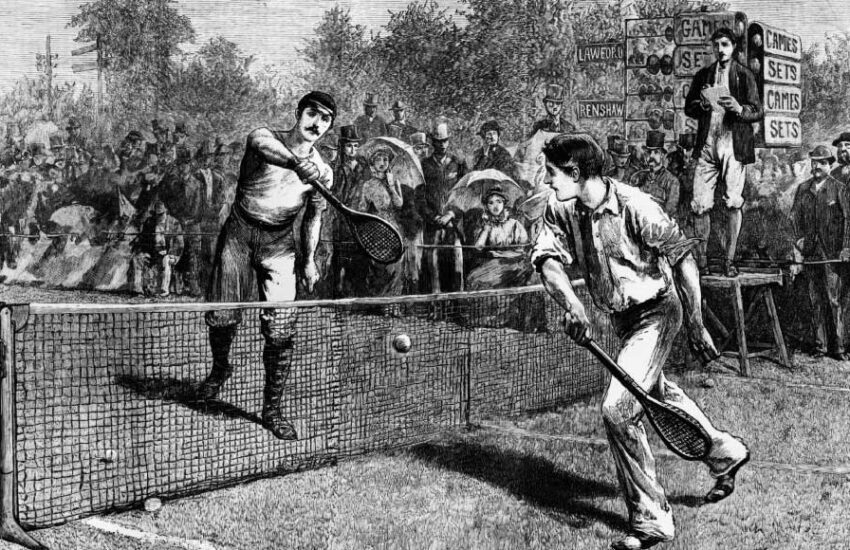What Is a Tiebreaker in Tennis? Set Resolution in the Sport
Amidst the spirited game of tennis, a pivotal game-changer takes center stage: the tiebreaker. Initially conceived to tackle prolonged matches and offer thrilling conclusions to closely fought sets, the tiebreaker stands as a testament to the sport’s continual evolution. Unveiling the mechanics, history, and significance of this game-defining element unfurls an intriguing tale within the realm of tennis.
Sequenced Serving and Rotation
A tennis tiebreaker enters the fray when a set arrives at a 6-6 standoff. Here’s an in-depth look into its operations:
- The tiebreak kickstarts with the player slated to serve next in the standard order;
- Players alternate two-point serves, initiating from the deuce (right) court;
- Changing sides after every six points ensures fairness amid elements like sun or wind.
Victory Conditions:
- The prime objective is securing seven points while maintaining a two-point lead (e.g., 7-5 or 8-6);
- At 6-6, the tiebreak continues until a two-point margin surfaces (e.g., 8-6 or 9-7);
- The set concludes with the tiebreak victor, regardless of the score settling at 7-6.
Discover the crucial role of tennis strokes in our guide to mastering every swing.
Super Tiebreak: Its Functionalities
Differing from the standard tiebreak, the super tiebreak, aka match tiebreak or champions tiebreak, steps in distinct scenarios:
Super Tiebreak Dynamics:
- Frequently applied in doubles or time-bound singles matches;
- Initiated akin to a standard tiebreak, commencing with the upcoming server;
- Players deliver two successive serves, shifting from ad (left) to deuce court;
- End court exchanges transpire every six points to maintain parity.
Triumph Criteria:
- The victor is the first to notch a minimum 10 points with a two-point lead;
- Scores might read 10-8, 11-9, or 12-10 until the crucial two-point cushion surfaces;
- The winner of the super tiebreak clinches the match, registered as a 2-1 set score in the tally system.
Intriguing Insights and Trivia on Tennis Tiebreakers
Tennis Tiebreak Innovations:
- The tiebreak’s 1970 introduction revolutionized tennis by curbing set duration;
- Wimbledon witnessed its inaugural official tiebreak in 1971.
Origins of the Tiebreak:
- James Van Alen devised the tiebreak to truncate extended matches and heighten viewer engagement;
- Initially dubbed the “Van Alen Streamlined Scoring System,” its aim was to eliminate protracted sets.
Tiebreak Milestones:
- The longest professional tiebreak lasted 20-18 at the 1985 Richmond WCT tournament;
- The historic Isner-Mahut Wimbledon duel in 2010 culminated in a staggering 70-68 fifth-set score.
Evolution of the Super Tiebreak
The super tiebreak’s introduction in Grand Slam deciders replaced traditional final sets for expedited match closures.
Strategic Considerations:
- Players adapt tactics in tiebreaks, emphasizing consistency and minimizing errors within the condensed format;
- The mental aspect becomes pivotal as players navigate the pressure of limited point-scoring scenarios.
Popularity of Tiebreakers:
- Standard and super tiebreaks have integrated seamlessly into modern tennis, providing thrilling conclusions to closely contested sets and matches;
- Their unpredictability and equalizing effect make tiebreaks enthralling for players and spectators alike.
Conclusion
In the pulsating realm of tennis, the tiebreaker emerges as a transformative element, reshaping match dynamics and fostering unparalleled excitement. From its inception to the evolution of the super tiebreak, these innovations have reshaped the sport and captivated global audiences.
Unveiling the nuances and trivia behind these set-deciding tactics enriches our understanding of the intricate tapestry that defines this captivating sport. So, when the scoreboard flashes a captivating 6-6 deadlock, embrace the exhilarating thrill of the tiebreaker, where the condensed format encapsulates the intensity and suspense emblematic of tennis.



